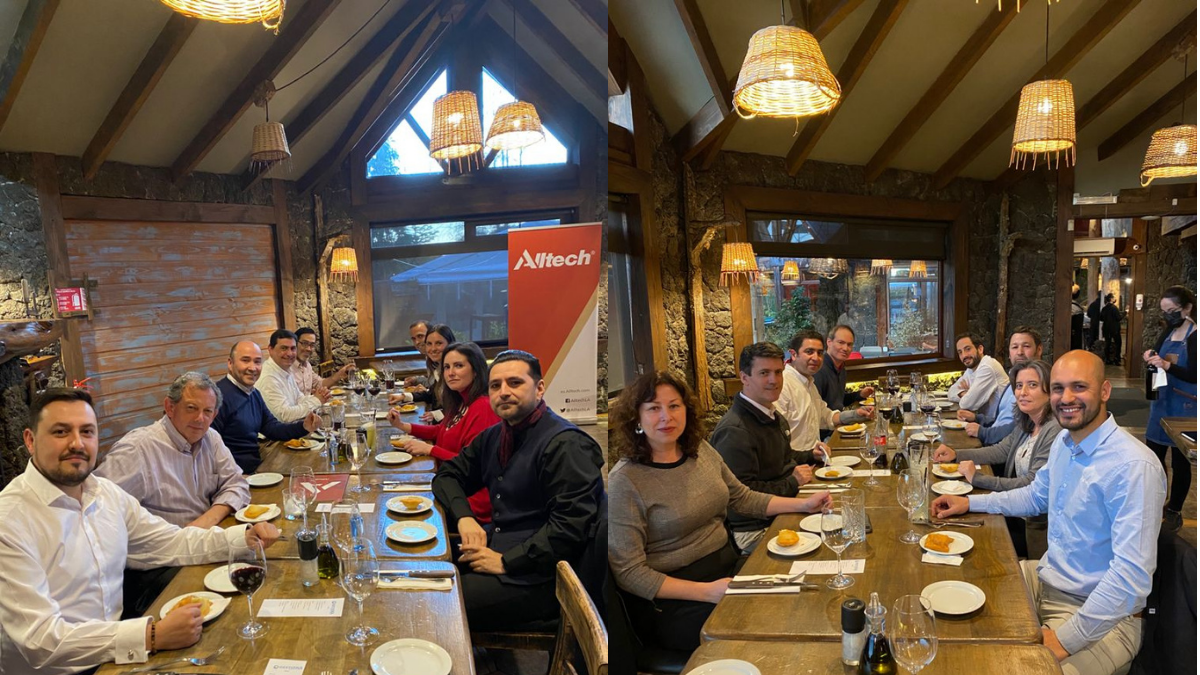
North America

Europe

Latin America

Asia Pacific

Africa

Middle East

North America

Europe

Latin America

Asia Pacific

Africa

Middle East
Confira nossa série de Minutos Técnicos onde nossos especialistas resumem em 1 minuto muito conhecimento e ideias para alavancar a produção de diversas culturas. Assista!
Batata Café Conilon Citros Cenoura Folhosas
Minuto Técnico Alltech Crop Science

Help your crops defend themselves. Based on Alltech’s nutrigenomics research on Saccharomyces cerevisiae SP.1026, AGRO-MOS provides the nutrition essential for plants’ natural defenses. Well-nourished plants have more effective defense systems that can readily respond to shifting stresses. AGRO-MOS is a liquid source of copper and is applied to the foliage. An essential nutrient, copper is responsible for regulating numerous biochemical reactions within the plant.
Benefits:


Maximize production potential.GRAIN-SET is a foliar fertilizer that supplies manganese, sulfur and zinc to the growing crop. Upon application, GRAIN-SET is translocated into the leaf tissue and is available for the plant to utilize. Managing adequate nutrition is a key component for maintaining the health of plants.
Benefits:


Applied nutrition for optimized production. Specially formulated for forage and oilseed crops, NATURE’S BASICS 2X is a blend of micronutrients and fermentation metabolites that are applied during flowering and fruit development to supply the plant with the nutrition required for better growth, fruit set and seed development.
Benefits:

Achieve peak performance. CROP-SET provides crops with essential nutrition for optimal root growth and reproductive formation, contributing to larger fruit size, improved uniformity and enhanced quality characteristics, such as color and °Brix.
CROP-SET is a foliar micronutrient fertilizer. It supplies sulfur, copper, iron and manganese to the growing crop. Upon application, CROP-SET is translocated into the leaf tissue and is available for the plant to utilize.
 Benefits:
Benefits:

El pasado 5 de octubre, en el marco de Gestiona, seminario virtual organizado por Alltech, especialistas y empresarios del sector acuícola chileno; se reunieron para abordar los aspectos que ayudan a alcanzar el éxito a través del liderazgo.
[Puerto Varas, Chile] – La gestión es un conjunto de procedimientos cada vez más complejos para cualquier empresa que desea permanecer en el mercado; y el recurso humano es el bien principal de toda organización. Pero dirigir a diferentes grupos de trabajadores, tener la habilidad de conocer sus inquietudes, obtener el máximo desempeño a través de la inclusión o retener a los mejores talentos; representan grandes desafíos.
Por ello, el pasado 5 y 6 de octubre, Alltech reunió a agentes de cambio, expertos y emprendedores de la industria acuícola y del sector agropecuario en Gestiona; un espacio virtual en el que se discutió cómo las empresas pueden superar retos, alcanzar metas y sobrevivir en un sector tan competitivo como el de los agronegocios.
Como parte de Gestiona, la oficina de Alltech Chile organizó una cena para los representantes de las principales empresas y asociaciones acuícolas del país –Ventisqueros, Australis Seafoods, Blumar Seafoods, Cermaq Chile, Intensal, Multi X, SalmonChile, Camanchaca Pesca Sur y Cultivos Yadran–; para que pudieran compartir las acciones de colaboración, innovación y sostenibilidad que están poniendo en práctica desde sus respectivos negocios.
De esta manera, luego de 20 meses alejados físicamente por la pandemia, alrededor de 20 líderes de la industria acuícola chilena tuvieron la oportunidad de reencontrarse y discutir de forma presencial –bajo estrictos protocolos de sanidad– las acciones que están dando óptimos resultados en la acuicultura local.
“Gestiona y la cena que tuvimos con los protagonistas de la acuicultura chilena significaron espacios valiosos para hablar de tecnología, colaboración, equidad y sostenibilidad a través ejemplos concretos que se están llevando a cabo en la industria”, comentó Sebastián Emhardt, gerente comercial de Alltech Chile. “El salmón chileno es un ejemplo de este trabajo en conjunto que hace que sea un producto más sano y competitivo en el mercado global”.
“En SalmonChile estamos muy contentos de haber participado en Gestiona y en esta cena de fraternidad”, dijo José Tomás Monge, director territorial de la compañía y uno de los expositores de Gestiona. “Como gremio, que representa a más de 50 empresas de la cadena de valor del salmón en Chile, creemos que para el desarrollo de la industria en el largo plazo es clave enfocarnos en la sostenibilidad, en la innovación y en el bienestar de los trabajadores”.
Esta cena fue la ocasión ideal para presentar al nuevo gerente de ventas de Alltech Chile para acuicultura. Raúl Cabezas es médico veterinario y MBA con más de 12 años de experiencia en la industria. “Estoy muy contento de ser parte del equipo de Alltech y aportar en la propuesta de valor que ofrece la compañía a sus clientes”, señaló Cabezas. “Hoy el sector local tiene el desafío de seguir creciendo y hacerlo de manera sostenible; y Alltech es un socio estratégico para este fin”.
En la clausura de Gestiona, el Dr. Mark Lyons, presidente y CEO de Alltech, señaló que la industria de América Latina tiene grandes oportunidades para crecer; pero que los productores deben analizar qué pueden hacer de forma diferente. También indicó que la sociedad está demandando un menor impacto ambiental y que iniciativas de colaboración como un Planeta de Abundancia™ de Alltech representa una oportunidad para trabajar juntos por un mundo con más alimentos nutritivos para todos, mientras se produce de manera sostenible.
Gestiona fue la ocasión para que destacados emprendedores de la región discutieran temas relevantes como la responsabilidad social empresarial, la igualdad de género, los valores o la empatía; lo que permite que las empresas sean más eficientes y productivas. Fueron 2 jornadas de intercambio de experiencias e inspiración, en las que los participantes constataron que los desafíos que se presentan a diario hacen que la acuicultura y los agronegocios sean más competitivos y se consoliden a nivel mundial.

